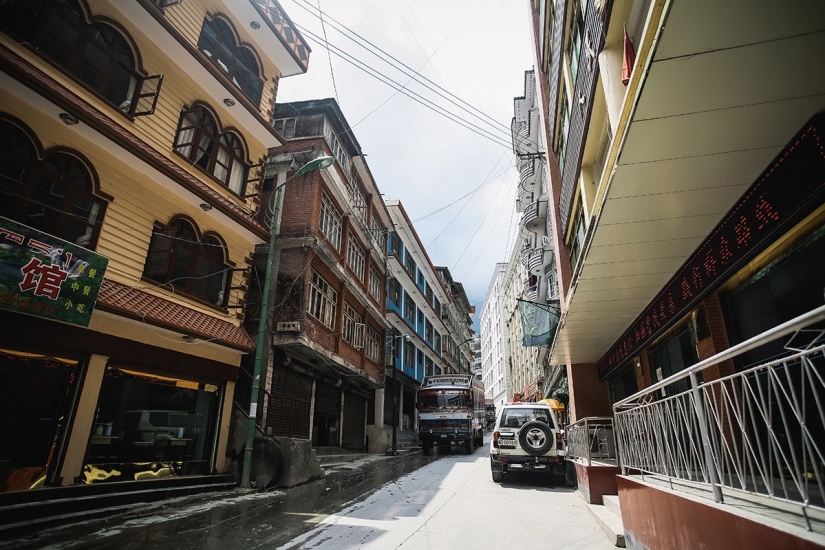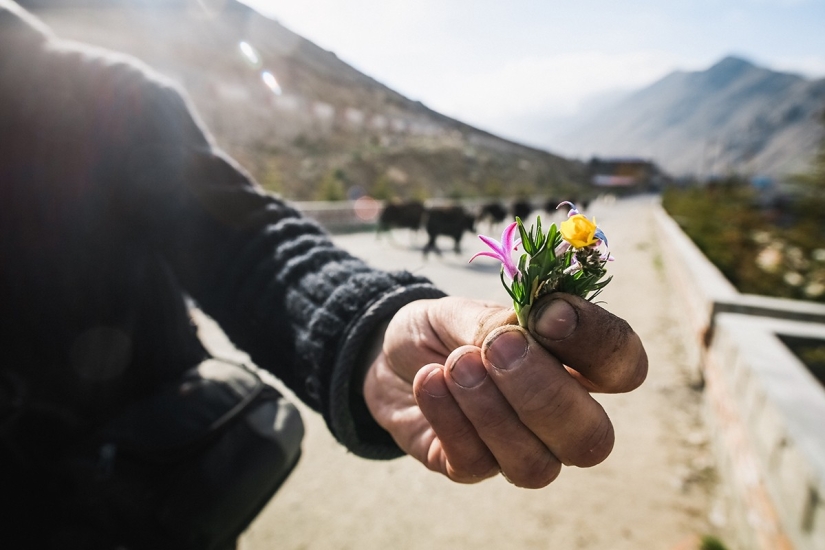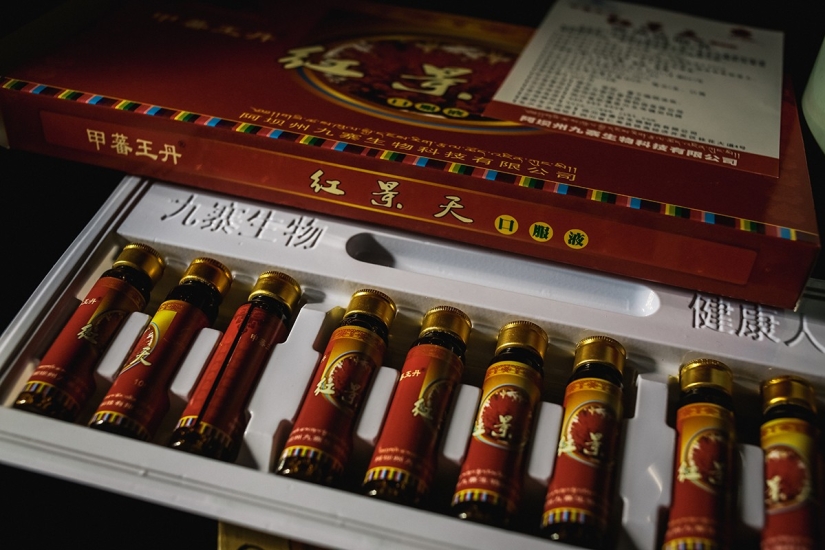In search of magic: on the other side of the border
We continue our story about traveling to the most mysterious place on Earth. The first steps in Tibet.
At the border of Nepal and Tibet, the last documents, a questionnaire, and on the other side of the Friendship Bridge are drawn up (which is not allowed to be photographed) you will be met by a local guide. Unfortunately, there is nowhere without it. Guides in Tibet (as well as drivers) are controlled by local security agencies, so it is better not to talk to them about controversial political topics, for example about the Dalai Lama. It will be safer both for the guide and for yourself. The route is laid out in advance, and a separate permit is given for each city and monastery. You can change the route within one city, i.e. within one checkpoint that you pass at the entrance. For example, in Lhasa, you can go first to the Sera monastery, and then to Drepung. And you can do the opposite. But it is impossible to go, say, to Tsurphu just 60 km from Lhasa, if it is not spelled out in the original route.
See all the materials of the cycle with the tag #in search of magic.
(41 photos in total)


1. Tibet is greeted by a huge number of Lungta prayer flags. They are posted on every pass and generally on high places where the winds blow. It is believed that the wind carries mantras around the world, which are written on flags. This brings happiness to all people and good luck to the one who posted the flags. Fabulous feelings.

2. After the dirtiest India and Nepal, the territory of Tibet seems to be the height of civilization. Excellent roads, all along which there are concrete fences in the mountains. The Chinese built roads in such a way that tanks could pass through them in the event of hostilities.

3. The first border town is Zhangmu. The altitude is quite comfortable, only 2300 meters above sea level.

4. Residents are mainly engaged in trade with the Nepalese side and serving tourists. Although the town has its own heroic history. After all, it was Zhangmu who was the first to meet British troops in 1904, who as a result could not advance further than Gyantse.

5. View of Zhangmu from the road.

6. The doors of the municipal building.

7. We were passing through Zhangmu. While the guide was finishing the paperwork, we had lunch and drove on. The town is very small and there is nothing to see there. But the way to the next settlement is very picturesque. Flags hang on the most difficult passes and turns, which are generally a kind of business card of Tibet.

8. It was very interesting how they manage to throw them so far. It turned out that local nomads do it. Some Tibetans still graze cattle on mountain slopes and live in tents, not in houses. They tie flags to arrows and launch multi-meter ribbons through the gorge or to a great height.

9. Cosmic landscapes on the way to Nyalam.

10.

11. We enter Nyalam. Translated from Tibetan, it means "The way to hell." The name of the city was given by the great yogi Milarepa, who realized the true nature of the mind in one lifetime. Once he meditated for seven days in a cave higher up in the mountains, and then descended to this windswept place. Probably, it was the cold winds that forced the yogi to name the city this way.

12. Here we stayed in the first guesthouse. View of the courtyard. Clean enough. Toilet and water outside. The rooms are designed for two to four people. There were five warm blankets on each bed in the room. We were surprised at first, but at night we realized their value, since after the midday June heat, the November cold set in. Besides, the dogs howled all night, not letting me sleep. Milarepa was right. A hellish place!

13. Tibetan houses in the city center are very colorful.

14.

15. While walking around the city, we saw how a local resident brought these roots… It turned out that it was yarsagumba — Tibetan Viagra. The Tibetan mushroom parasitizes silkworm larvae, and the result is a powerful remedy for male potency.

16. Local Tibetans hand over their finds to visiting buyers for a song, and they are already selling medicine at exorbitant prices in Lhasa. However, having reached our countries, the price of yarsagumba increases fabulously.

17. The Buddhist's car.

18. The further away from the center, the sadder it gets.

19. This is the outskirts of the city. The main "gold" lies on the coils — dried yak manure, it depends on its quantity whether they will survive the harsh mountain winter. Oddly enough, but there is no specific smell, there is no smell from people, although it will not turn the tongue to call their clothes (and faces) clean. It's all about the dry climate and strong winds.

20. Local flora.

21. The road from the city.

22. A typical Tibetan house, very large by local standards.

23. Nyalam children.

24. There are a lot of dogs in Tibet, and you can see your dog near almost every store or house.

25.

26. And this is our salvation in the literal sense of the word — a Chinese medicine for altitude sickness. Nyalam is already at an altitude of 3750 meters above sea level, and it was here that we began to feel all the charms of altitude. You can also drink our diacarb-type medicines, but they must be drunk in a course 1-2 weeks before the trip, plus do not write off the possibility of strong side effects. Hong Jin Tian (Hong Jin Tian) also acts instantly and is made on a natural basis. Among the disadvantages of this medicine is its short—term effect. The guide explained to us that this is generally characteristic of Chinese medicine. Tibetan pills give a more stable result, but they are also cumulative, that is, they need to be drunk for several weeks to have an effect. So it would be difficult to survive a trip through the mountains without these bottles. Two such packages were enough for us for several days for 4 people.

27. The most interesting place is outside Nyalam. But it is not on the map, and tourists do not always make a stop here. This is the cave of Milarepa. We knew that the cave was somewhere nearby. After talking with the guide, we decided to stop there the next morning.

28. Four monks look after the cave. None of them was in place, and the keeper of the keys was able to call by phone only half an hour later. But whether he will come soon, we did not understand. It remained only to wait.

29. View of the Milarepa cave. Just outer space, in which you want to dissolve.

30. There are many stones around with images of Buddhas and mantras. Everything is sacred. Every pebble.

31. Stone turrets are symbolic stupas that embody the body, speech and mind of a person. Anyone can build them. They are put together for savdaks, the patron spirits of the area. There are especially many of them here. As our guide told us, they should be made low, while reciting a certain mantra, but it will remain our secret.

32. Formidable lions guard the entrance.

33. While we were waiting, eagles appeared in the sky, and just a few minutes later a monk came and said he would let us inside.

34.

35. Tarchang, a pillar that is renewed every year. It symbolizes the tree of life, and in some areas real trees or shrub branches are used instead.

36. Interior of the inner gompa (meditation hall), where rituals and ceremonies take place.

37. And here is the cave itself. All the items on the altar are offerings. The atmosphere inside is simply indescribable. The cave is very small, but the four of us sat down in it for a little meditation.

38.

39. It was not easy to go down to the cave and climb up from it. Mountain sickness was doing its job. Each step is like a test.

40. Local sweet tooths escorted us to the car, earning a bag of sweets and some money.

41. See all the materials of the cycle with the tag #in search of magic.
Photo: Ekaterina Ageeva / Text: Sergey Martynov
Keywords: In search of magic | Border | Tibet
Post News ArticleRecent articles

May West once jokingly said that she should be given a license to invent sex, which she discovered for Americans. The name of this ...

Thailand is a kingdom of amazing beauty, where the colors of nature mingle in a captivating palette of rich and varied landscapes. ...
Related articles

We all know that decomposition is a natural process that no living being can avoid after death. You can stop it with the help of ...

In just five years and three and a half billion dollars, China built a 1,150-kilometer highway connecting the "Roof of the World" ...

The ability to enjoy the beautiful is inherent exclusively in man, because the planet has no concept of aesthetics. Many ...

In the late 1960s and early 1970s, thousands of young people from all over the world embarked on an incredible journey that would ...